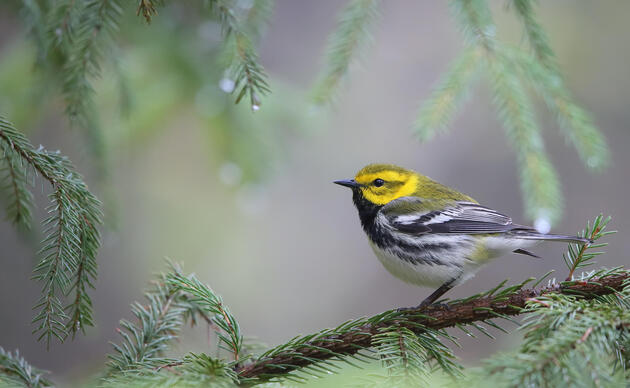I don't know about you, but when the temperature drops and the skies turn gray nothing feels quite as good as curling up with a warm cup of tea. The fun of this tea comes from foraging evergreen needles yourself! Most conifers, or trees that produce cones, are evergreens. Evergreens are named for their green foliage that stays functional for more than one season. You can use white pine, balsam fir, or spruce needles depending on what is in your backyard or local green space. This tea is also a sneaky way of getting your family and friends to drink more Vitamin C! Evergreen needles pack a punch of Vitamin C and they are also thought to promote immune systems and aid with viruses like the flu or common cold.
First, let's talk identification! It's very important that you are able to identify the evergreens that produce needles safe for confumption. Below I will introduce you to four common evergreen species, some key characteristics of each and how to harvest.
A note of caution: There are look-alikes that are poisonous, like Yews. Please do not consume anything you can not confidently ID.
A quick note on foraging: Please be sure to harvest sparingly and responsibly. Take only what you need.
Here's what you'll need:
- Basic conifer ID so that you can be sure you're harvesting the correct needles
- Garden pruners or sharp scissors for harvesting
- Several tablespoons or a handful of evergreen needles
- A pot or deep saucepan
- A fine strainer
- Some mugs to enjoy your tea in!
- Optional: honey
White Pine
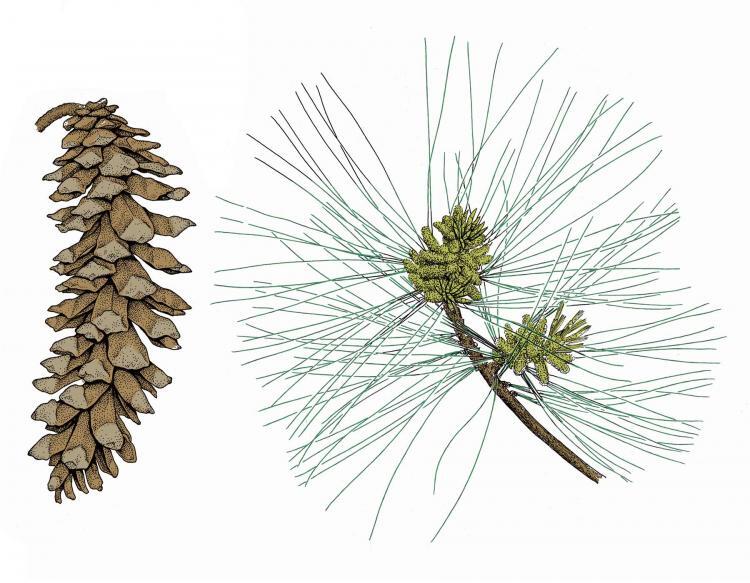
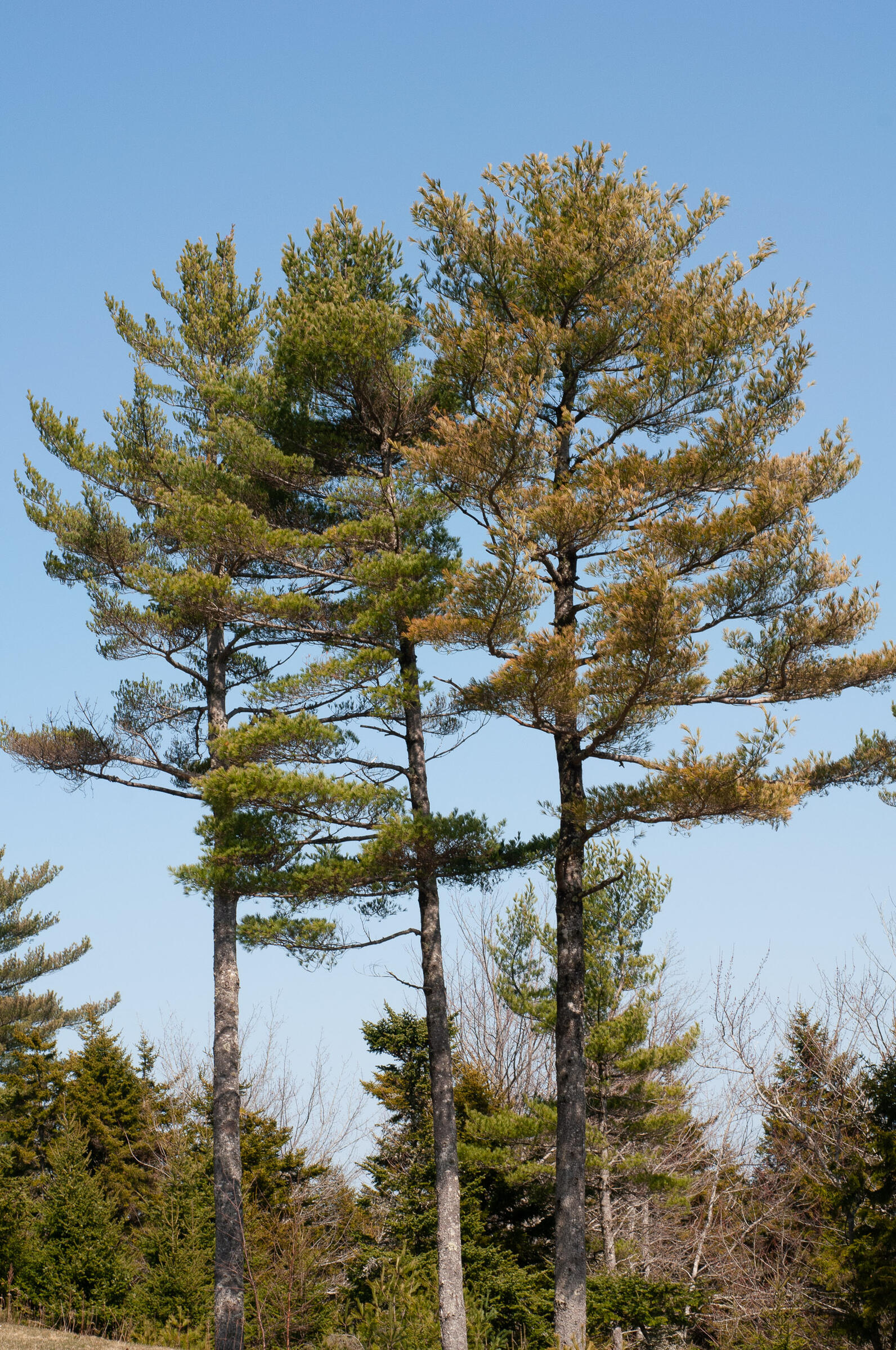
Eastern white pine trees are tall, slender trees with long, feathery needles starting about 30 feet up from the base of the tree. Younger trees are cone-shaped - as they grow, they loose their lower branches and become less evenly shaped.
Bark: Smooth and gray (young tree) or rounded gray scales (mature). Branches grow out horizontally.
Needles: Blue-green color, about 3-5" long. Needles are clustered in groups of 5.
Habitat in our region: White pine can be found just about anywhere on the east coast. They grow prolifically around Vermont because they grow easily in disturbed soils such as those used for pasture or tree farming. At one point in the 1800s about 80 percent of Vermont's land was used for sheep pasture.
Balsam Fir
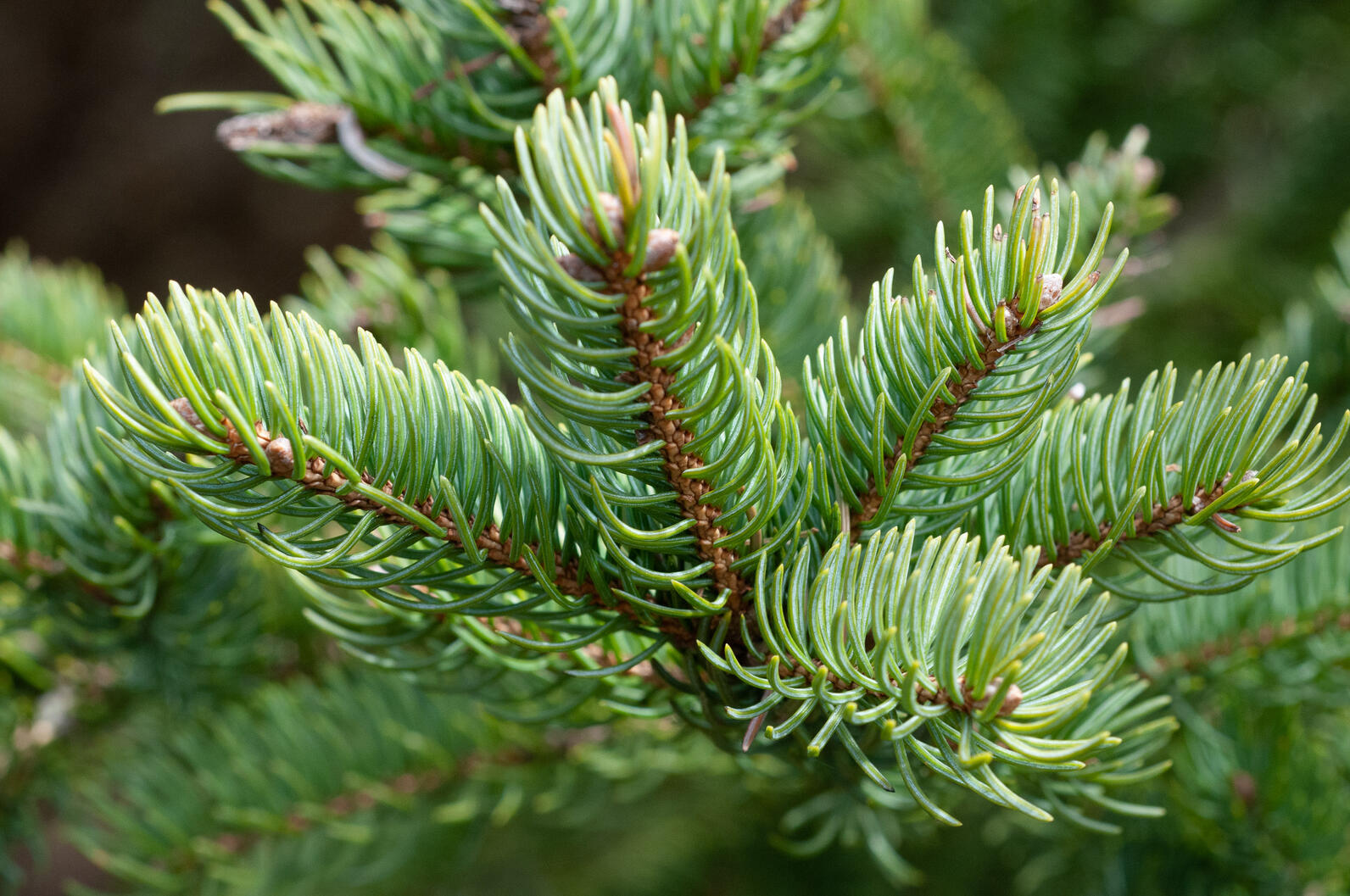
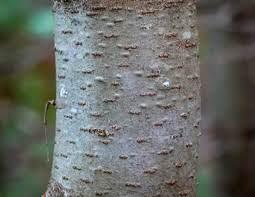

This tree probably looks familiar since it's commonly farmed and used as a Christmas tree. Balsam firs are also beautifully fragrant and, I think, a quintessential smell of wintertime. They are tall (up to ~90 feet!) and conical (cone-shaped).
Bark: Smooth, gray with lots of resin blisters (see picture above).
Needles: Flat shiny dark green needles ½-⅞" (1.5-2.5 cm) long. Needle tips may be flat, notched, or rounded.
Habitat in our region: Boreal forests. Well adapted to cold climate.
Red Spruce
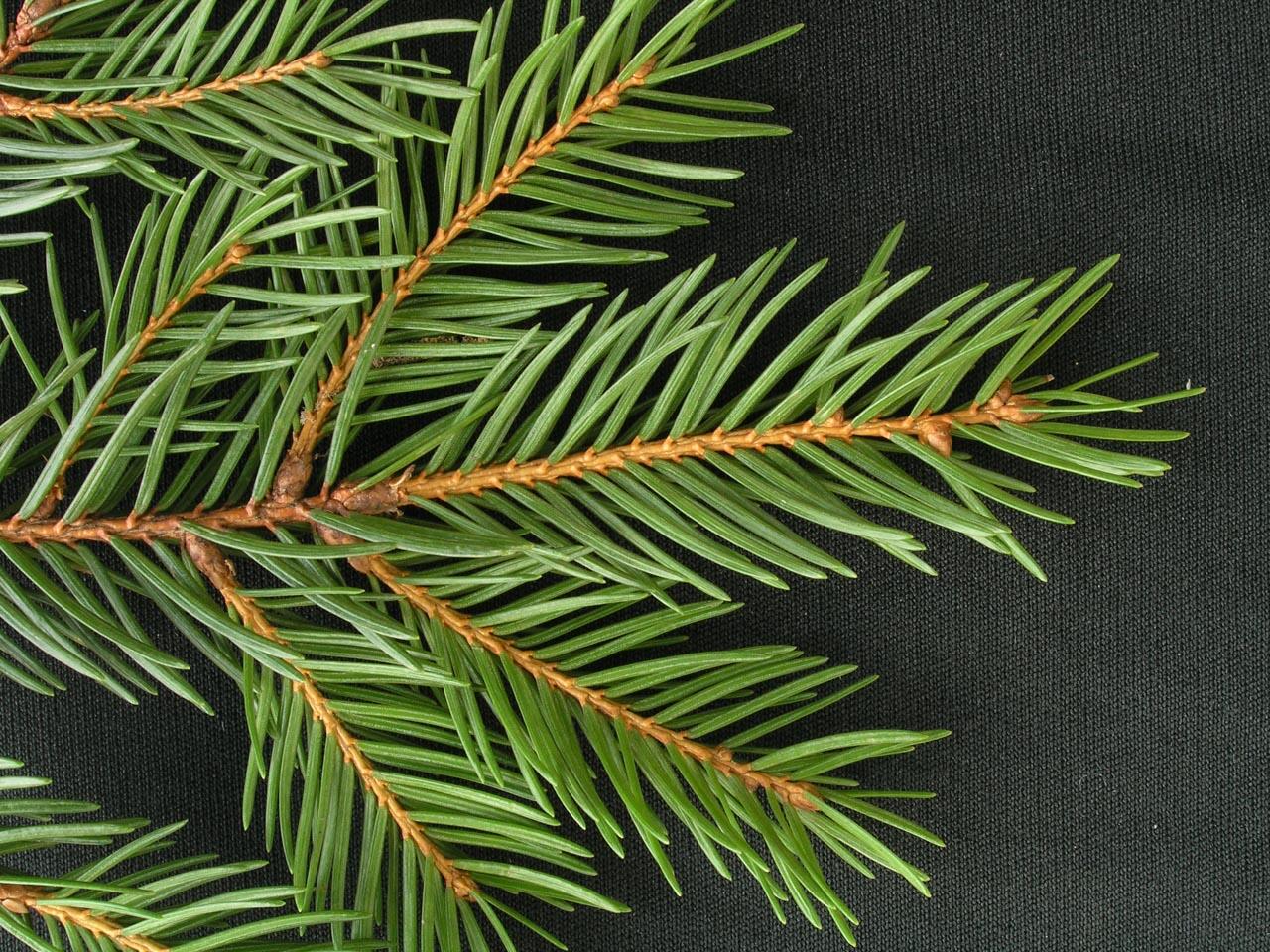
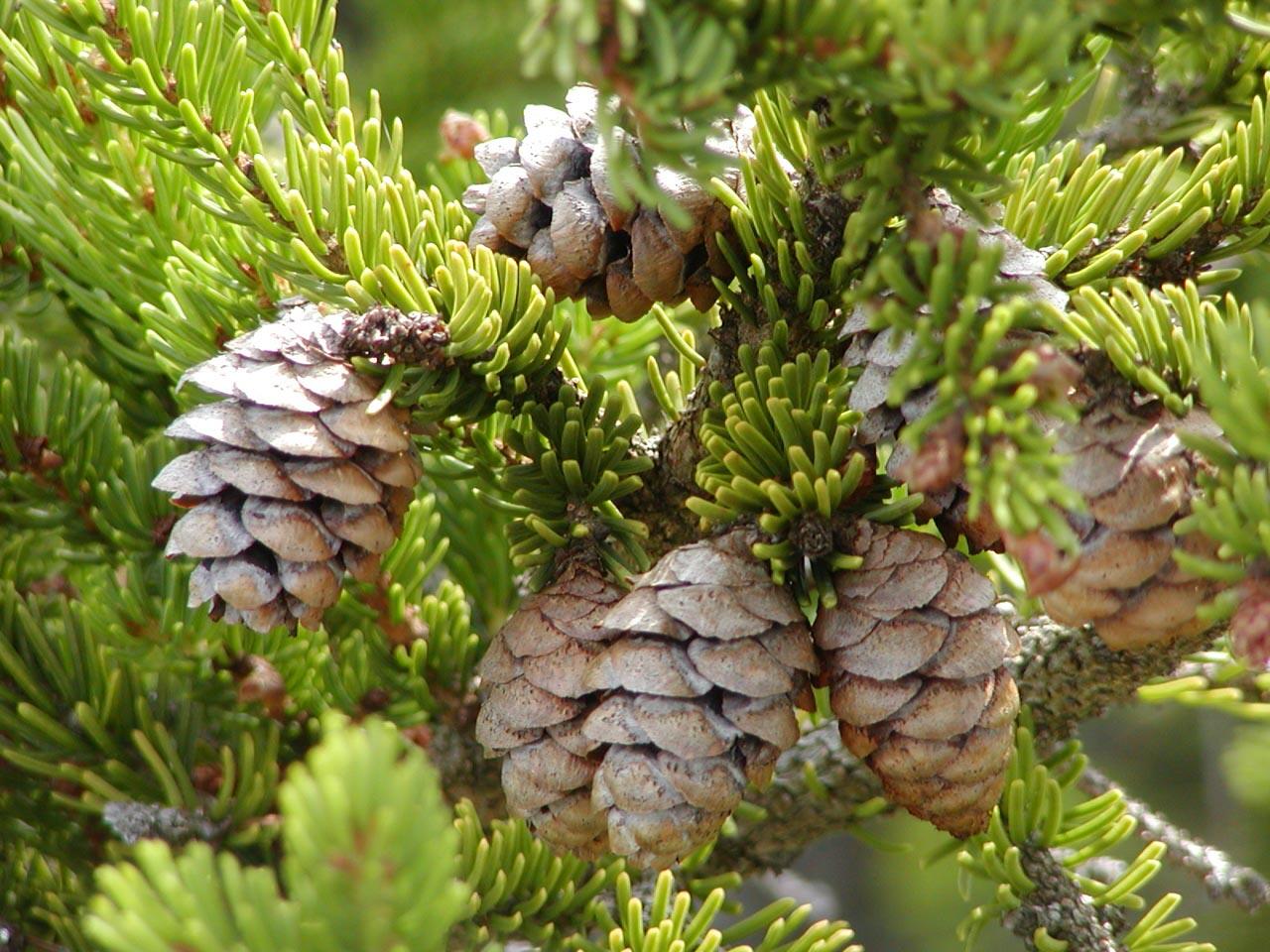
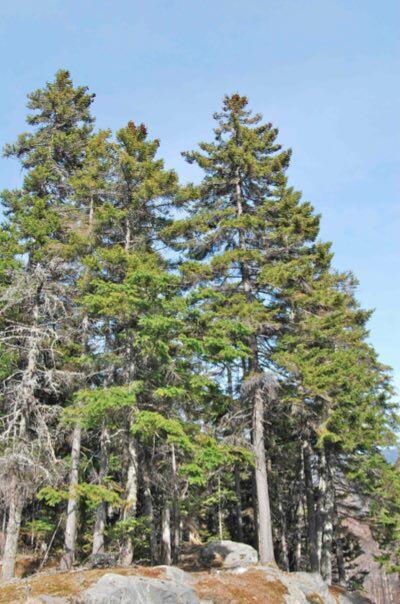
Red spruce is a medium-sized, native evergreen that is commonly farmed for timber and pulpwood. The needles are thought to have medicinal properties that can help sore throats, respiratory issues and other ailments.
Bark: Gray-brown to reddish brown. Scaly.
Needles: Short four-sided, sharp needles that grow all around the twig.
Habitat in our region: Cool, boreal forests. Mixed conifer or hardwood forests.
WATCH OUT: This tree has a close relative, the white spruce. White spruce is not poisonous, but it does have an unpleasment odor when needles are crushed or steeped...similar to cat pee or skunk. If you're unsure, crush the needles and smell before harvesting. Red spruce will have a lovely, pine/floral scent. Red pine needles are also brighter green, while white spruce have bluish-green needles.
Norway spruce

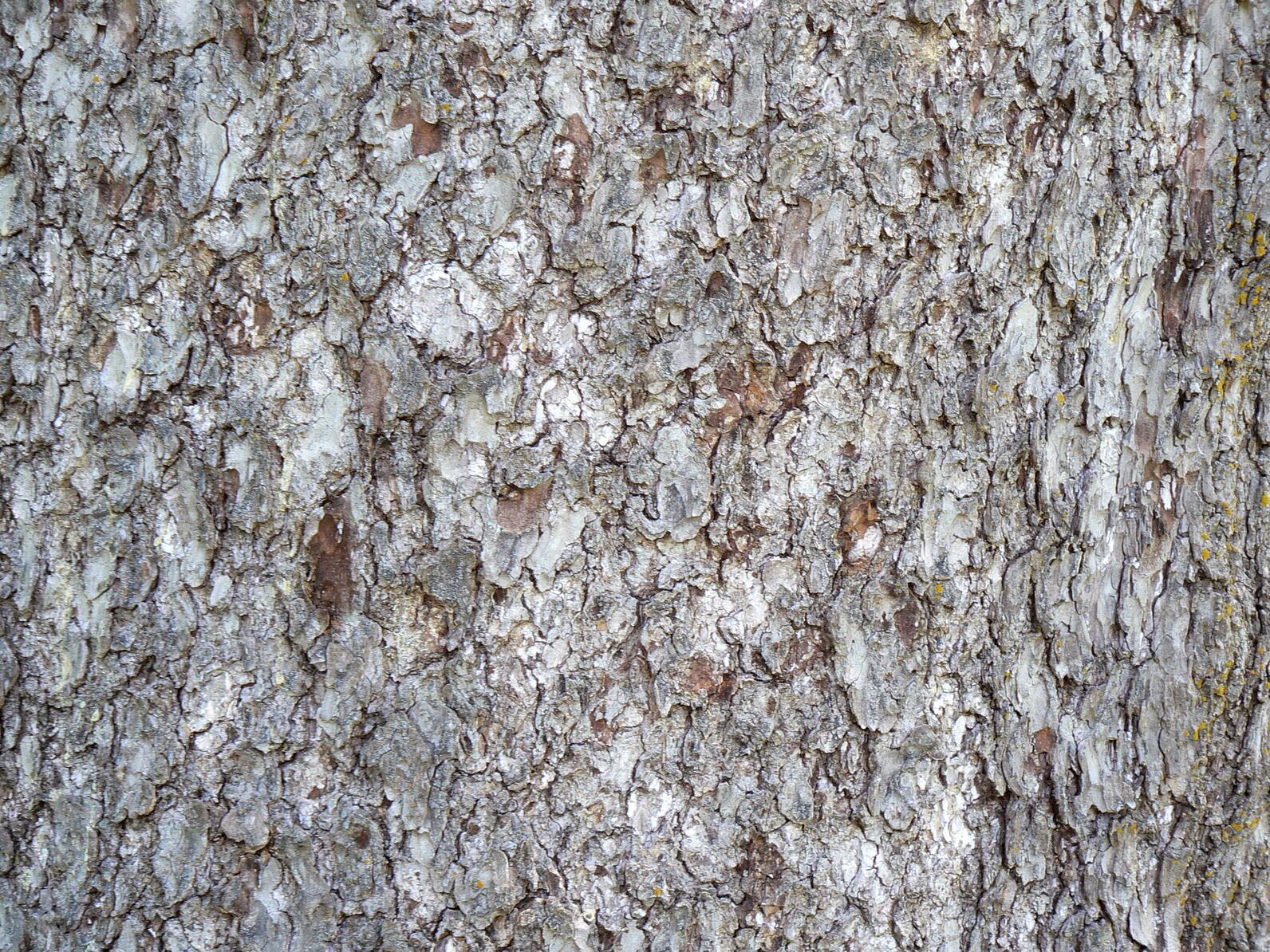
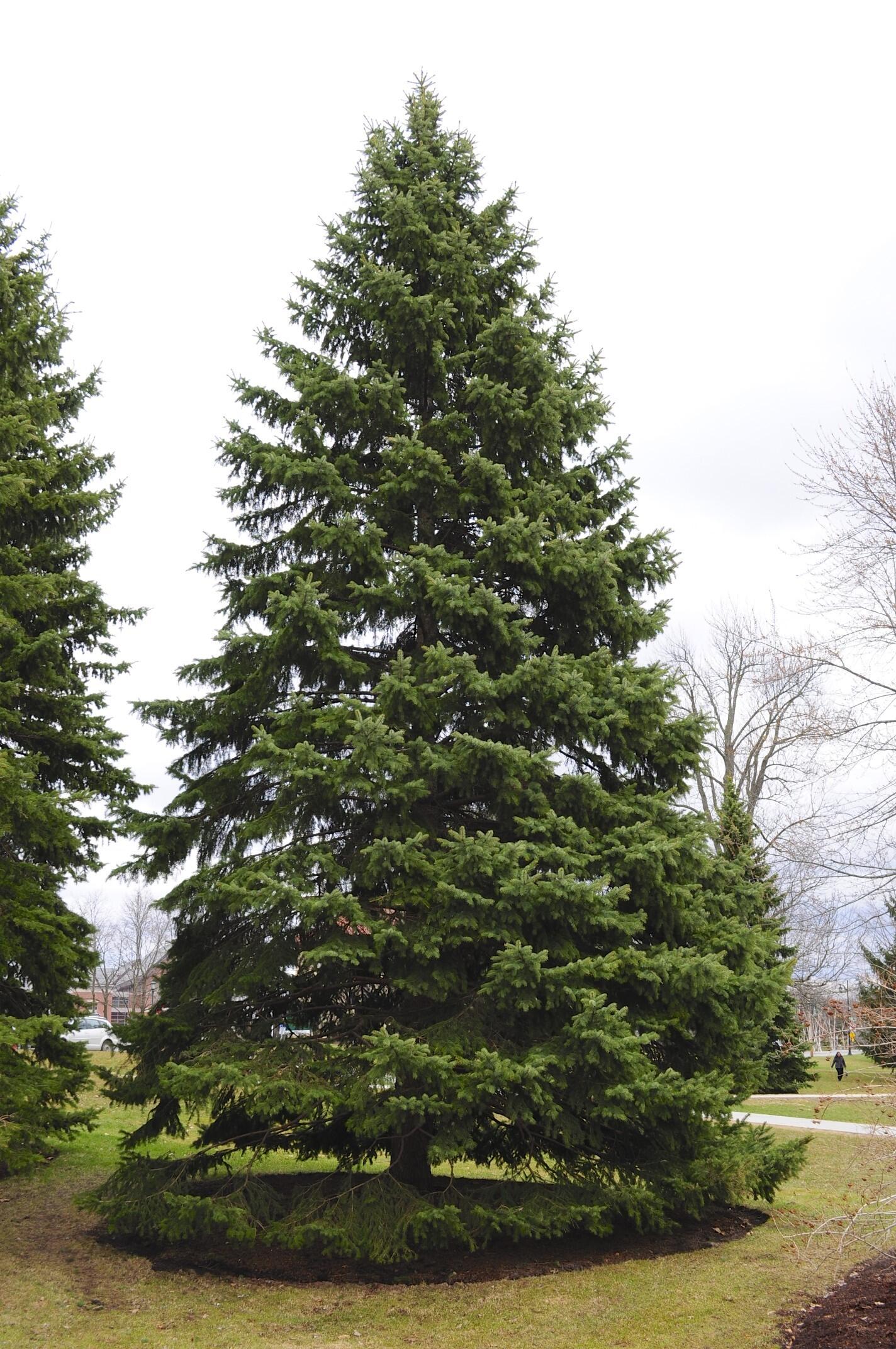
The Norway spruce is a non-native tree can grow up to 150 feet and pyramidal. Their branches are so distinct that it can help you indentify a Norway spruce. Lower branches slope downward while top branches branch up and out - this helps the tree distribute the weight of snow on its branches. It is the only spruce with branchlets that downward from main branches.
Bark: Orange-brown and flaky. Becomes scaly and gray with age.
Needles: Dark green, also produce long cones - longest of any spruce.
Habitat in our region: Not native, ornamentally planted all over the state. There are some great, tall ones at UVM, Rock Point Conservation Area and Shelburne Farms.
To harvest you will need your garden pruners or scissors and a vessel to carry your twigs/needles in. Always harvest needles toward the end of the branch because they are freshest. The best time of year to harvest is Spring since there is a lot of new growth, but the trees will provide a yummy tea year-round.
It's tea time!
Grab your evergreen needles, a pot and a strainer.
1. Add 2 cups of water to your pot and set heat on high.
2. Put several tablespoons of chopped needles or a handful of needles as is (you can keep them connected to their twig if you'd like) into the water.
3. Bring to a boil, then turn down heat and simmer for 10 minutes.
4. Let sit in pot for 5 minutes and then strain.
5. Pour into a mug and enjoy!
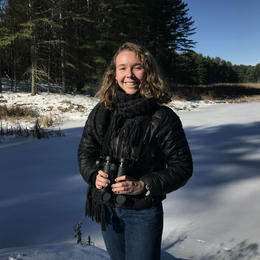
By Sarah Hooghuis
Take Action
Sign up for updates about Audubon Vermont's conservation work, get news about our activities and local events, and find out how you can take action to help birds.

